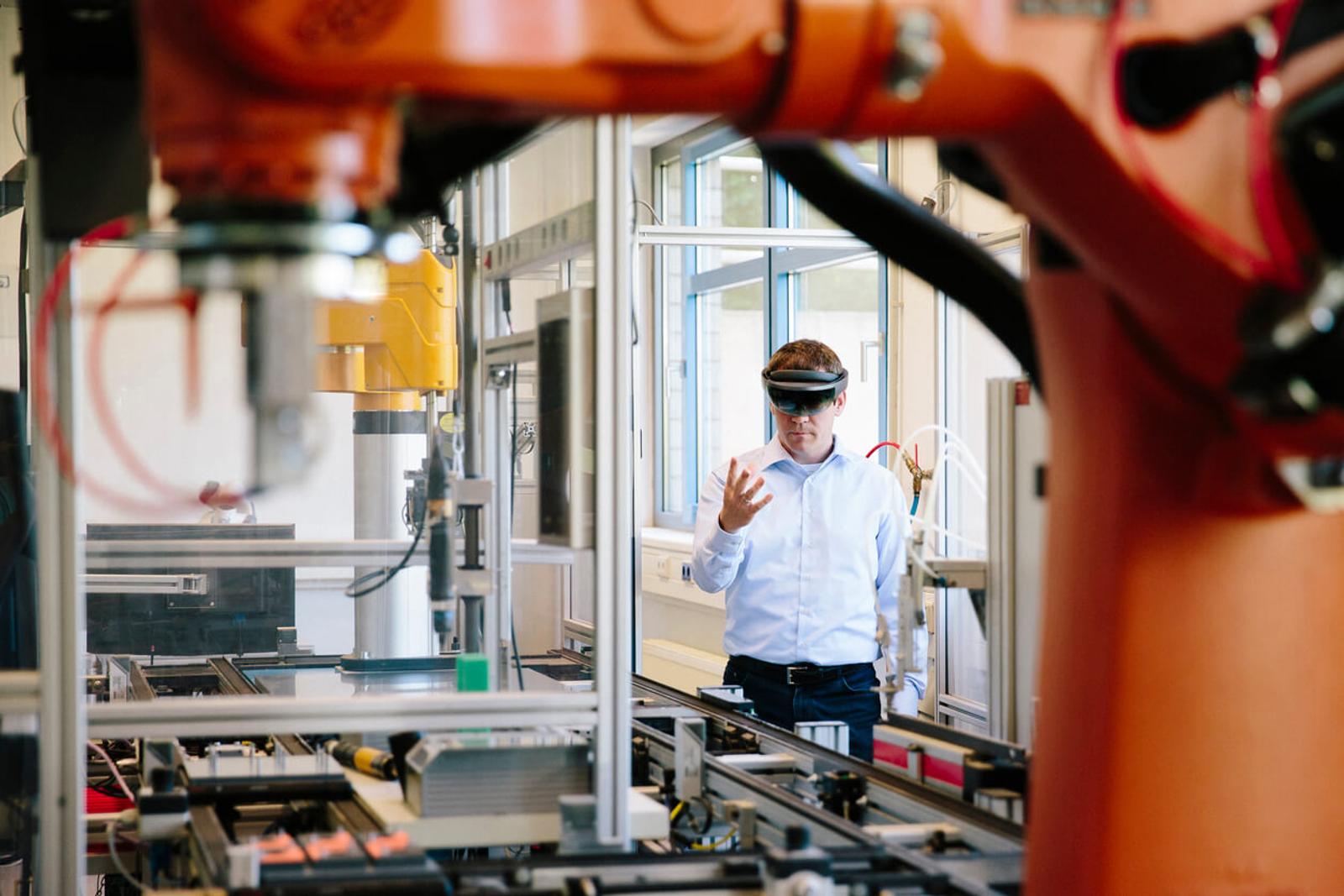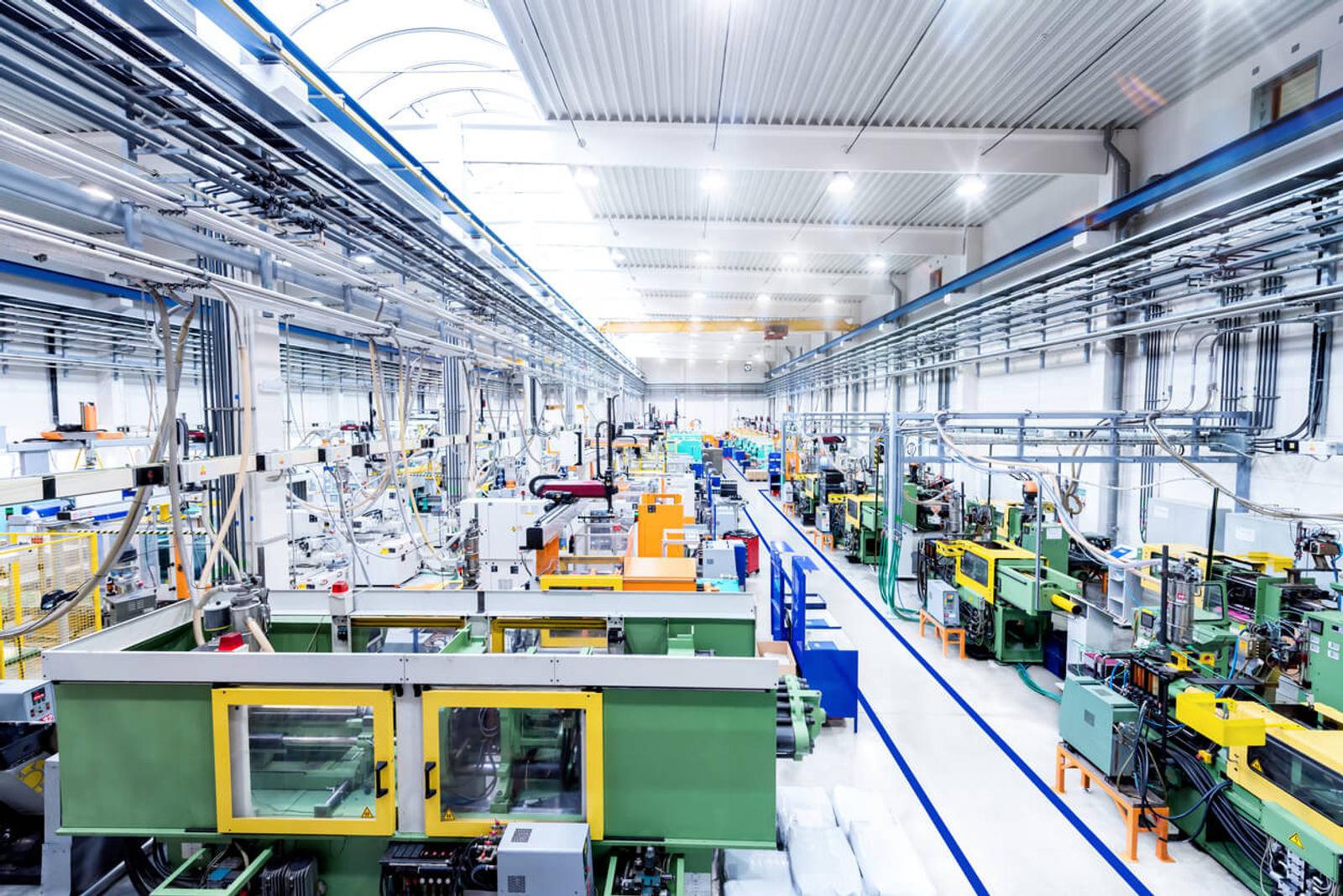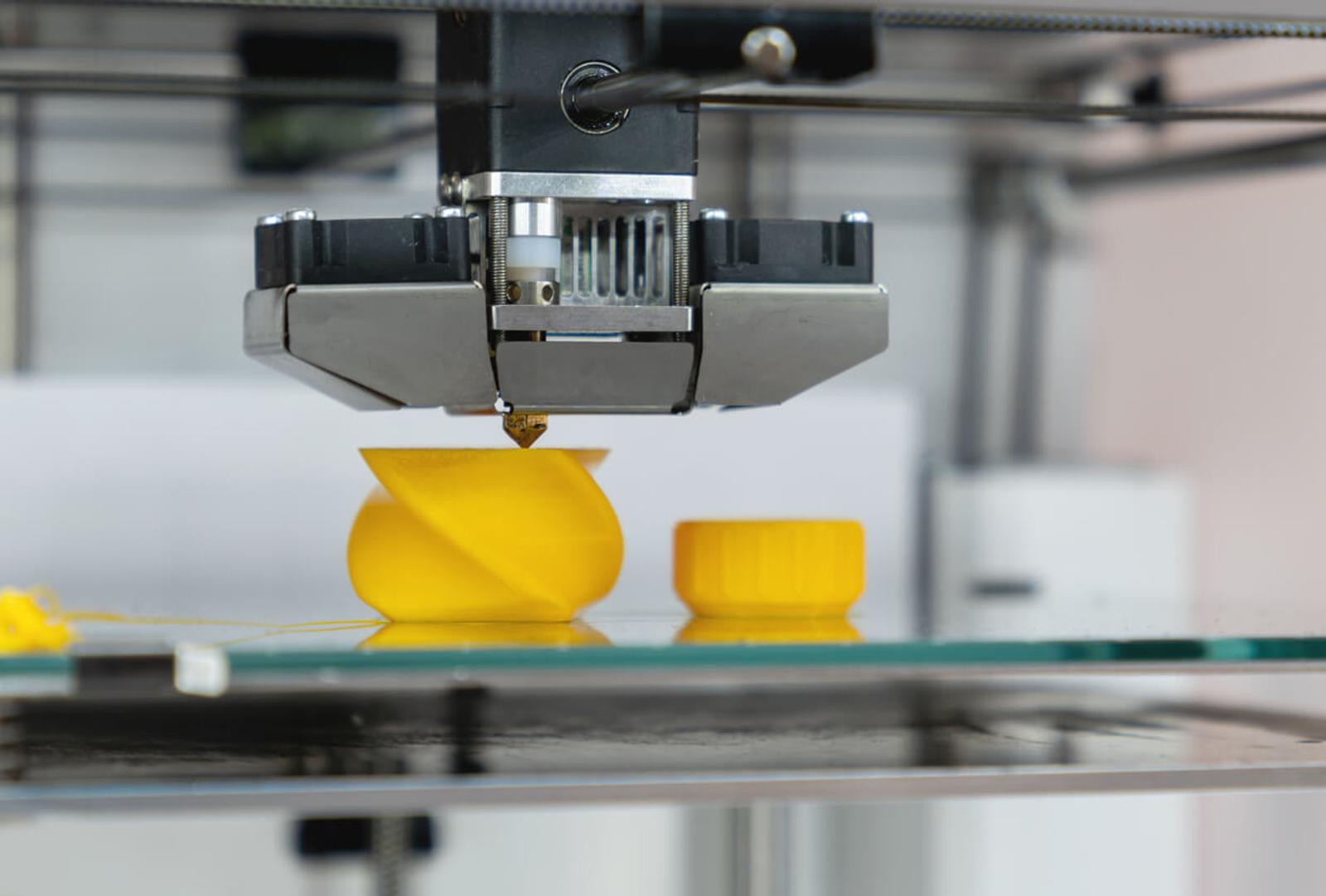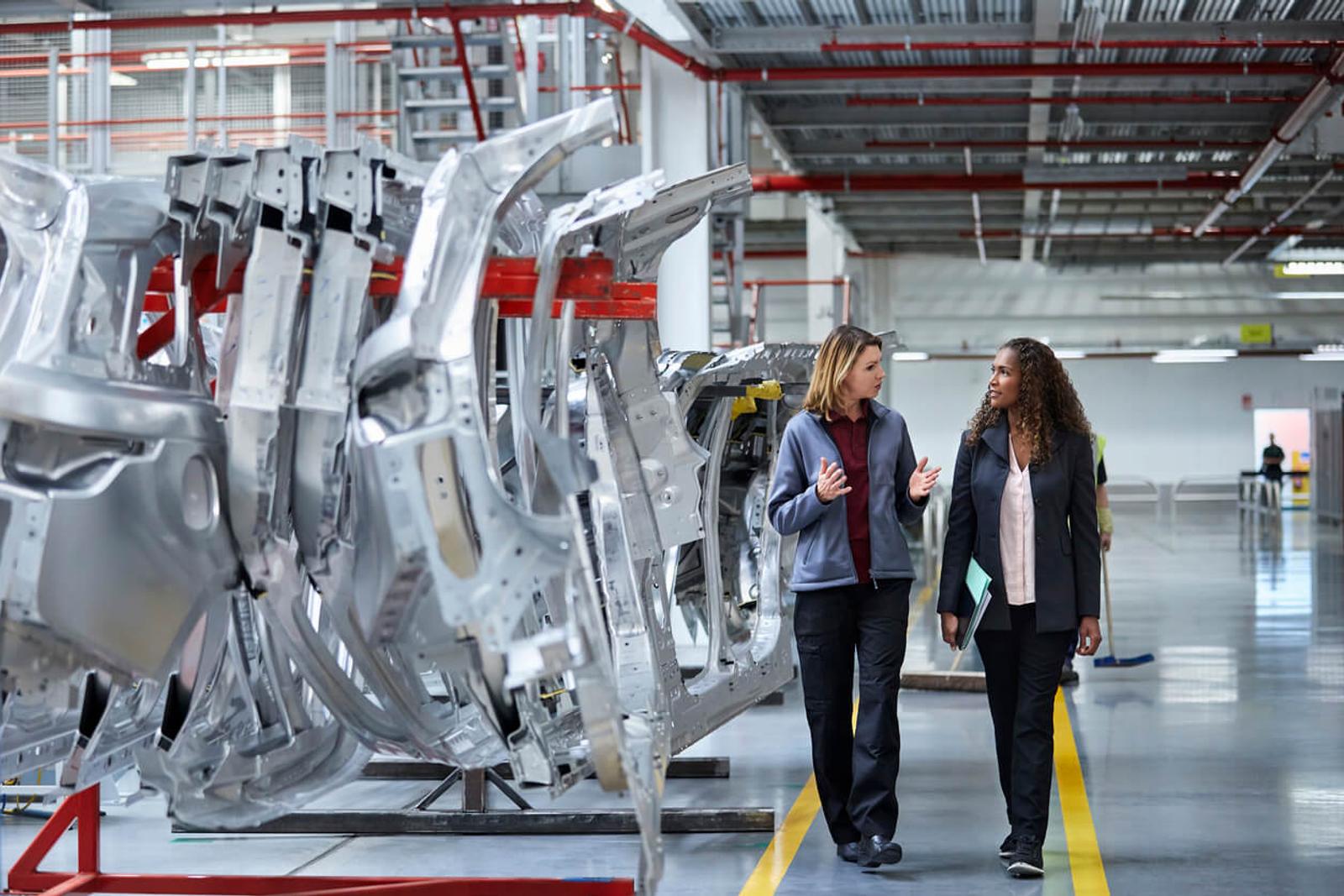Smart Factories: The Role IoT in the Future of Manufacturing

Smart factories are disrupting the manufacturing industry. Learn how they work and what the future holds for key industries.
What is a Smart Factory?
The term “smart factory” refers to digitized manufacturing—incorporating modern technologies such as IoT sensors , AI, robotics, and machine learning in the inner workings of a factory. Digitization provides valuable insights that can help manufacturers achieve greater efficiencies around quality control, predictive maintenance for machines, and better communications between information technology (IT) and operational technology (OT) sides of the company.
The smart factory is one component of an innovation revolution known as Industry 4.0 or the Industrial Internet of Things (IIoT). Altogether, IIoT promises to revolutionize industry processes and help organizations take advantage of all types of data.
Click the links below to jump to what you’re looking for:
- What are the benefits of smart factories?
- How do smart factories impact manufacturing?
- How do smart factories work?
- Why do we need smart factories?
- Risks and challenges of smart factories
- 5G and the future of smart factories
What Are the Benefits of Smart Factories?
Shifting toward digital technologies can yield many benefits for manufacturing companies. Added efficiencies across production systems mean smart factories can produce more at a lower cost. The shift toward smart factory technologies will likely result in threefold productivity improvements in the manufacturing sector over the next decade, according to a recent report. Let’s take a closer look at some of the specific benefits:
Accelerated Innovation
Many workers spend time entering or tabulating data. Automating simple, repetitive tasks can help them focus on priorities and complete projects faster—with fewer people involved. This streamlining effect allows companies to innovate more quickly without the need to make additional investments.
Predictive Maintenance
IIoT sensors installed on factory floor machinery monitor not only what’s happening around the machine, but also what’s going on inside it. This data helps to predict when the machine will need maintenance attention, and can alert workers to a problem before it’s obvious. Proactive maintenance efforts can greatly reduce downtime, saving the manufacturing company both time and money.
Enhanced Data Management
More data is collected now than ever before—and smart factories are part of that data revolution. Between IoT sensors, robotics, and machine learning, the flow of data from the edge to the cloud is massive. Digital data collection means factories can optimize their data flow, giving them the ability to manage and analyze information in real-time and use it to make better decisions.
Cost Savings
Because smart factories connect enterprise systems with operational technology (OT), they offer a better view of productivity and forecasting. They can more easily track deliveries and inventory levels, using that insight to identify waste and optimize supply chains. Beyond the IT/OT connection, improved efficiencies across smart factories yield additional cost savings.

How Do Smart Factories Impact Manufacturing?
As manufacturing companies continue to adopt smart factory technology, they will reap the benefits of maintaining predictive maintenance on their machines, better control of data flow, and cost savings across multiple areas. Beyond becoming more efficient at what they already do, though, manufacturing facilities will make fundamental changes in how they operate.
Customization
Customization will become simpler as resetting and retooling equipment becomes more automated—and as a result, factories will be less rigid and more flexible. For example, a car manufacturer might have the ability to assemble one make of car in the morning and another in the afternoon on the same assembly line, with minimal downtime between tasks.
Impact on Jobs
While there’s ongoing concern that automation will eliminate manufacturing jobs, there’s evidence that technology doesn’t make workers obsolete—it just changes the tasks they need to do. There’s a growing digital divide in manufacturing: an increasing need for workers who are well versed in operating modern technology. The same workers who used to assemble parts on the line may need to perform robot maintenance or manage IoT sensors.
OT/IT Convergence
Historically, manufacturing companies have separate systems for business operations and the plant floor. Sending data between the two is difficult, if not impossible, under legacy systems. But IIoT and cloud-based platforms are changing that, allowing factories to integrate their operational technologies with their enterprise resource planning (ERP) and customer relationship management (CRM) systems. Gaining big-picture knowledge yields many benefits and can help business leaders see clearly to make decisions.

How Do Smart Factories Work?
Originally used to make prototypes, 3-D printing now holds out tremendous promise to enable mass customization and build tooling parts rapidly.
The term “smart factory” is a bit nebulous—and few factories are completely digitized at this point. But many are moving in that direction, prioritizing different innovations depending on their needs. Here’s a basic example of how a smart factory can work.
An appliance factory installs sensors on factory floor equipment. Even legacy equipment, not built for connectivity, is made “smart” by adding certain types of adaptive sensors. The plant also installs robots that can carry out assembly tasks and AI vision cameras to help with quality assurance. All of the machines collect data about their status and surroundings (for example, temperature and vibration levels) and send it to servers on the premises and a cloud-based IoT platform.
Workers keep an eye on incoming data via IoT dashboards on computers or tablets. They receive alerts if there’s an imminent issue—if a machine overheats, for example—and can deal with it immediately. The on-premise platform has analytic capabilities, meaning managers can view and share reports on productivity, workflows, and maintenance issues. Some of the data also flows to a cloud-based IoT platform, allowing IT teams to access and leverage it for making decisions.
To see how some smart factories are incorporating diverse technologies, let’s take a closer look at a few use cases.
Enterprise Visibility
Large manufacturing operations need to keep track of millions of moving parts—from actual parts on the assembly line to maintenance supplies and mobile machinery. Smart factory technology can provide better enterprise visibility, or the ability to track materials and machines within a facility. Black & Decker, a power tool manufacturer, partnered with Cisco and Aeroscout Industrial to create an enterprise visibility system that relies on Wi-Fi RFID tags. Managers can check in at any stage of production and adjust speed, review employee performance, and monitor quality control.
Digital Additive Manufacturing
Better known as 3-D printing, digital additive manufacturing allows manufacturers to create parts using a 3-D printer. Originally used to make prototypes, 3-D printing now holds out tremendous promise to enable mass customization and build tooling parts rapidly. Parts are stored as digital files and can be printed on demand (distributed manufacturing). For example, Fast Radius creates parts for consumer products, packaging, aerospace, automotive, transportation, and medical industries using a digital additive manufacturing model. They maintain a virtual warehouse with every part design they have ever manufactured. Because they make products on demand only, they’re able to be much more flexible and agile than their more traditional counterparts.
Real-Time Guidance for Workers
Smaller orders and specific demands are creating more complexity for manufacturers. They need to stay in closer communication with operators and workers on the floor to ensure that production timelines stay on track. Wittenstein, a Germany-based components manufacturer, launched an interactive system to provide real-time guidance to their operators. Using a touchscreen device, workers have access to a dashboard that relays process descriptions, materials, and specific instructions.

Why Do We Need Smart Factories?
The shift toward smart technology will make manufacturing facilities much more efficient, nimble, and cost-effective. Here are few reasons why we will need smart factories in the coming years:
They enable data-driven business decisions.
As more data is collected in every sector, manufacturing companies need to leverage it through analytics. The ability to analyze real-time data allows them to predict future growth, notice trends, optimize productivity and workflows, and identify problems before they become crises.
They can compete in the global market.
Factories that fail to adopt smart technologies will soon lag behind manufacturing facilities around the world. To compete in the digital world, factories must embrace modern technology.
They support environmental sustainability.
The many added efficiencies of smart factories could dramatically decrease negative impacts on the environment. For example, a factory that makes twice as many products with the same amount of time and energy will greatly reduce its environmental impact.
While smart factories are full of promise, they’re not without challenges and risks. Let’s take a closer look at potential pitfalls.
Risks and Challenges of Smart Factories
Financing Industry 4.0
Turning a manufacturing facility filled with legacy equipment into a smart factory is a daunting and expensive task. Companies must purchase an array of IoT sensors, robotic equipment, networking hardware, and software platforms. The upfront investment can be daunting, so most factories are taking the transition in stages—for example, they might first focus on connecting legacy equipment to power predictive maintenance.
Data Security
As in all other IoT applications, security is a serious concern for smart factories. Whether from external threats or internal carelessness, data can be lost or stolen and held for ransom if it’s not properly safeguarded. To mitigate security risks, manufacturing companies need to choose technology that has built-in security safeguards and ensure that they stay vigilant with ongoing best practices.
The Digital Talent Gap
As manufacturing jobs shift toward skilled digital tasks, there’s a growing need for workers who are savvy with the newer technology. This talent gap means there’s plenty of opportunity for traditional manufacturing workers to learn new skills and adapt to new roles—and for computer scientists, data analysts, and engineers to take on IT level responsibilities.
Connectivity
To operate, smart factories need to maintain a constant connection between equipment on the floor and an IoT platform in the cloud. If the connection is broken or network security is breached, the facility could experience service disruptions and unexpected downtime.
Fragmentation
With hundreds of vendors crowding the IoT market, manufacturers may struggle to build an integrated solution that achieves their goals and includes the security features they need. Partnerships continue to spring up between hardware and software providers, networking solutions, and engineering companies, but fragmentation is a continuing challenge for manufacturers who want a streamlined smart factory.
5G and the Future of Smart Factories
As technologies become more common, they also become more affordable. The cost of shifting toward smart solutions for manufacturing will continue to fall in the years to come, making it an achievable goal for most factories. Networking innovations such as 5G will enable lower latency, faster data transfers, and better edge computing, making it easier for factories to manage the vast quantities of data produced by smart technology and enabling more sophisticated AI and machine learning applications. 5G will also make it possible to build compact, free-roaming robots far more affordably. These robots can take on dangerous or intricate tasks and are make decisions more quickly than their human counterparts.
Another advantage of 5G is flexibility—the freedom to adjust the network based on the facility’s needs, and the ability to keep sensitive data at the edge instead of routing most or all information into a cloud platform. Network slicing will allow factories to divide their 5G network into several virtual networks designated to particular tasks.
Ultimately, smart factories are in the process of adoption around the world, and they will be here to stay. Along with other IIoT technologies, they will bring the potential for greater efficiency and precision in manufacturing than ever before.